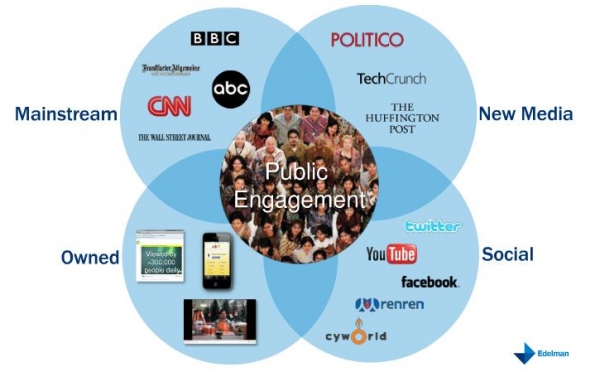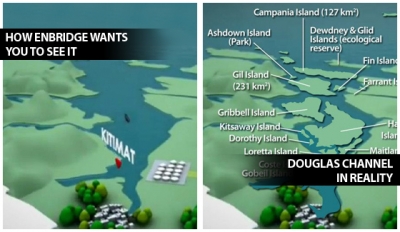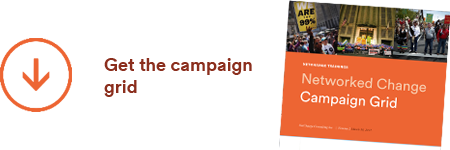Success in the advocacy world is essentially about getting your issue or cause onto the agenda of the powerful by going direct, via a mass public outcry, or ideally both.
Not so long ago, you could get pretty far with a supportive story in the top tier media, so most advocacy NGO’s built up powerful and fairly well resourced media departments focused on just that. And they’ve had a lot of success, until recently.
In today’s crazy diffuse media environment with a tuned out, over-marketed to, and mistrusting population, putting all our outreach efforts into traditional big media PR is not only out of date thinking, it misses major opportunities for breaking through.
The three spheres of media influence
With all our resources going towards the big hit, we often ignore natural allies in alternative or online media who would be more than happy to raise awareness about our cause, if we only asked. We also have fairly powerful “owned channels” (email, web, social media) to let our own supporters know, but with all the competing internal messages have trouble aligning them around one message. Worse, our digital outreach strategies often consist of little more than a senior campaigner dropping a release on the web director’s desk with the directive to “Make It Big”!
To truly break through today you need success with three distinct but interconnected media spheres:
- traditional media stories, ideally with follow ups, and across multiple publications (one syndicated AP story doesn’t count)
- similar wide coverage in the alternative media, online and offline (though mostly online)
- people powered social media storms, that reach people who don’t read or trust big media, but that ironically feed it when it works
The global PR firm Edelman has a similar take on this approach, with what they call their “clover leaf” model for public engagement. They outlines four areas modern brands need to master:

Because causes typically have very small or no advertising budgets, I dropped “owned channels”, and replaced their “new media” bucket with “online alternative media”.
But we’re talking about the same thing: to hit all the the demographics, one good hit in the “serious” newspaper isn’t gonna cut it.
Social builds traditional builds social…
Last spring I interviewed the global director of digital at Al Jazeera while doing research on digital transformation for Human Rights Watch. He had just published his PhD thesis at Oxford on the Internet’s role in the Arab Spring protests the year prior.
It’s become somewhat common knowledge now, but here’s how he described “social waves” can change the world:
- something happens, a real world trigger, that becomes the proverbial straw that breaks the camel’s back. One person, or a brave group of them, take brave real world action
- social media and direct human relationships grow this movement, helping it snowball and grow
- if you’re lucky, the media will pick up the story and amplify it, thereby leading to
- more people in social media and more people coming to real world actions, which
- becomes another big media story reaching millions of people…
- and WHAM: if you’re lucky you’ve got a movement that can topple dictators, stop corrupt laws, or change the national conversation.
Malcolm Gladwell tried to cover this media amplification dynamic in his otherwise lame and largely panned piece on internet activism in 2011. He told the story of how the original lunch counter protesters in Selma, Alabama, once covered by the news, amplified the story so widely the next week there were dozens of similar actions across the South that eventually engaged 70,000+ activists to change the world.
What’s different today is the diminished influence of big media, the rise of the alternative press, and the wildcard: people-powered media.
Getting to breakthrough
Last summer I was involved with what’s become known as the “Enbridge missing islands” caper. We helped highlight and amplify a story about a giant and hated pipeline company conveniently removing 1,000 km2 of rocky islands from their slick PR “shipping oil safely” video. 
The story went viral, and last fall a poll came out showing 40% of BC citizens had heard about the incident.
40%! With no ad budget! To compare, only 48% of BC voted in the high stakes provincial election last week where millions was spent. Try to think of a cause with this level of penetration and recall from voters.
How did we get there? The graphic we made had about 30,000 Facebook shares (translating potentially to millions of people) and the first local media story reached tens of thousands more. The next day a supporter used the graphics to remix a video that gave us another boost. Then big media covered the story, everywhere. Another supporter saw that and was inspired to make this stunning video, which went viral again. And the media covered that.
We got to 40% with a strategy around each pillar that created a virtuous cycle feeding the whole system (and a bit of luck, of course).
If your campaigns are still overly focused on getting the one big media hit, you’re missing your chance to not only break through, but to grow your movement using the communications tools of our times.
Maybe it’s time for a more balanced approach.










